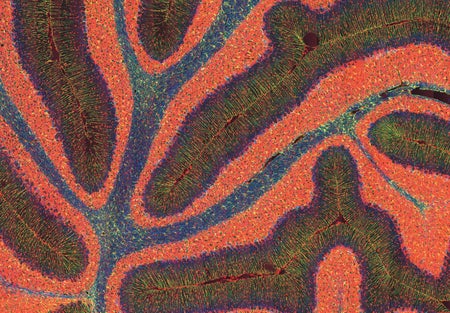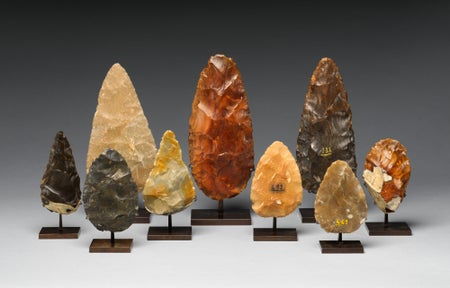
Why Some Brains Don’t Rot and Other Wild Things We Learned about the Human Body in 2024
From periods of rapid aging in our 40s and 60s to ancient brains that don’t decompose, here are some of the year’s most intriguing stories about human biology

Why Some Brains Don’t Rot and Other Wild Things We Learned about the Human Body in 2024
From periods of rapid aging in our 40s and 60s to ancient brains that don’t decompose, here are some of the year’s most intriguing stories about human biology

When Did Neandertals and Humans Interbreed? Genomics Closes In on a Date
The oldest human genomes ever sequenced reveal that our Neandertal ancestry came from one “pulse” of interbreeding and pins down the timing

Read all the stories you want.

Some Brains Don’t Rot. Here’s Why
Misfolded proteins may preserve postmortem brains well after other tissues have decayed

Fossil Footprints Suggest Two Early Human Species Crossed Paths within Hours
Two sets of fossilized footprints from early human species were made within a few hours of each other about 1.5 million years ago, researchers suggest

When Did Human Ancestors Start Using Tools?
The 3.2-million-year-old human ancestor known as Lucy sparked a revolution in scientists’ understanding of the origins of clever hands and stone tools

Bury Me on the Moon—Preferably on the Far Side
The far side of the moon offers grounds for compromise between advocates and opponents of lunar development

The Arecibo Message, Earth’s First Interstellar Transmission, Turns 50
In 1974 we beamed a radio transmission into space that changed the way we think about our place in the cosmos

The Lucy Fossil’s Extraordinary Journey to Becoming an Icon of Human Evolution
The 3.2-million-year-old human ancestor known as Lucy rose to fame through an incredible combination of circumstances

Traditional Music Shows Global Similarities in How We Sing
What can singing tell us about how we’re wired—and how our ancestors evolved?

Massive Megalith That Predates Stonehenge Shows Science Savvy of Neolithic Humans
A survey of the Dolmen of Menga suggests that the stone tomb’s Neolithic builders had an understanding of science

What Does the ‘Hobbit’ Fossil Discovery Teach Us about Our Tiny Human Relatives?
A tiny human relative called the hobbit, or Homo floresiensis, may have evolved from a larger ancestor that shrunk upon arriving on the Indonesian island of Flores, a new fossil suggests

Popcorn, the Ultimate Snack, May Have Truly Ancient Origins
Popcorn might be more than 6,000 years old, an anthropologist explains